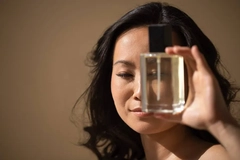Mandating sustainability: Roquette Beauté on planet-friendly cosmetic ingredients

Beauty consumers increasingly scrutinize product labels and demand transparency about the environmental impact of ingredients. These shoppers expect their brands to take responsibility for their impact beyond profit.
Personal Care Insights speaks to Ophélie Bourgon, marketing manager at Roquette Beauté, about how cosmetic companies must rethink their sourcing strategies and advance toward a circular economy. She tells us that sustainability is no longer an option but a mandate.
The personal care ingredients company recently launched Beauté by Roquette ST 305 at In-cosmetics Global 2025. The ingredient is an alternative to mineral and synthetic powders, aiming to provide “unique” sensory benefits and compaction properties across various cosmetic applications, such as makeup, skin care, toiletries, hair care, and fragrances.
Beauté by Roquette ST 305 is sustainably sourced from non-GMO waxy corn starch. The solution is readily biodegradable and non-ecotoxic. It is also white, talc-free, and free of nanoparticles.
What are the primary shifts in planet-friendly ingredients in the past few years? Where will they continue?
Bourgon: For a few years now, consumers have not only been asking for planet-friendly ingredients, they also expect them to be included and at the heart of brands’ product development strategy. This has led brands to re-evaluate their sourcing strategies and incorporate more responsible raw materials.
Moving forward, this will accelerate, with innovations focused on circular economy principles, using renewable feedstocks, and developing fully biodegradable or compostable ingredients. The industry is transitioning from simply replacing synthetic ingredients to embracing a holistic approach that promotes regenerative practices and minimizes ecological footprints at every stage of the product lifecycle. This evolution reflects a broader consumer consciousness and a collective commitment to protecting our planet.
Where is the drive for planet-friendly ingredients in cosmetics coming from?
Bourgon: The drive mainly comes from a combination of consumer demand, regulatory pressures, and industry-led initiatives. Today’s consumers are more informed and conscious about sustainability, expecting products that align with their values. Additionally, stricter regulations on eco-labeling and ingredient disclosure are urging brands to prioritize responsible sourcing and environmental safety. Roquette Beauté’s ST 305 sensory powder offers a biodegradable alternative to synthetic and mineral powders in cosmetics.
Roquette Beauté’s ST 305 sensory powder offers a biodegradable alternative to synthetic and mineral powders in cosmetics.
How can the personal care industry support the move to planet-friendly solutions?Bourgon: Meeting consumer demand, regulatory pressures, and societal shifts toward eco-conscious practices means offering products combining safety, ethical sourcing, and performance. It will be in the brands’ hands to educate consumers to understand safe and sustainable choices in stores and to transition from beauty to sustainable beauty.
How do beauty brands ensure their ingredients are planet-friendly and not participating in greenwashing?
Bourgon: To ensure that ingredients are truly planet-friendly, transparency, verification, and responsible sourcing are essential. Brands must rely on reputable certifications and clearly communicate their sourcing processes and environmental impact, backed by scientific data and third-party validation.
What are some of Roquette Beauté’s planet-friendly solutions?
Bourgon: Responding to these challenges, we have developed a novel and game-changing sensory powder, Beauté by Roquette ST 305 (Amylopectin), that not only addresses the rising concerns of the market but also aligns with the growing emphasis on sustainability. Our porous, compressible powder derived from waxy corn starch offers a biodegradable alternative to existing sensory powders, providing an eco-friendly option without compromising on the performance and sensory benefits that consumers expect.












